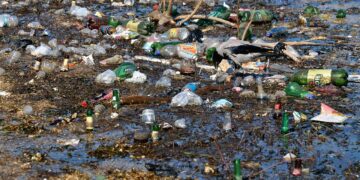Rising Sea Levels: Understanding the Impact and Taking Action
Rising sea levels are an increasingly critical issue that poses significant risks to coastal areas around the world. Triggered primarily by the effects of global warming, the increasing ocean volumes threaten communities, ecosystems, and economies. This article provides an in-depth look at the causes, consequences, and commonly asked questions about rising sea levels, and it also discusses actionable steps that can be taken to mitigate its effects.
What are the Main Causes of Rising Sea Levels?
Rising sea levels are primarily caused by two related factors: thermal expansion and the melting of ice over land. Thermal expansion occurs when seawater expands as it warms up due to increasing global temperatures. The second significant cause, the melting of ice sheets and glaciers, adds tremendous volumes of freshwater into the oceans.
Both of these issues are directly tied to the larger framework of climate change, driven by increased greenhouse gas emissions from human activities such as deforestation, burning fossil fuels, and industrial processes.
Thermal Expansion Explained
As the atmosphere warms due to the accumulation of greenhouse gases, ocean water absorbs much of this additional heat, causing it to expand. This expansion contributes to rising sea levels globally.
Melting Ice Sheets and Glaciers
The polar ice caps, along with glaciers found in Greenland and Antarctica, are experiencing rapid melting. This not only contributes to sea level rise but also affects marine life and global weather patterns.
Consequences of Rising Sea Levels
The implications of rising sea levels are vast and varied, affecting different regions in multiple ways. Here’s a closer look at some of these consequences:
Increased Flooding Risks
One of the most immediate effects of rising sea levels is an increase in coastal flooding. These floods threaten to disrupt lives, damage properties, and can cause devastating economic impacts in coastal communities.
Threats to Coastal Ecosystems
Ecosystems like mangroves, coral reefs, and salt marshes are particularly vulnerable to rising sea levels. These environments are crucial for biodiversity and act as natural barriers against coastal erosion.
Impacts on Human Migration
As areas become increasingly uninhabitable due to flooding or loss of resources, there is likely to be a rise in climate refugees — people forced to leave their homes due to climate-related issues.
Addressing Common Questions
Can Rising Sea Levels Be Stopped?
While we cannot completely halt sea level rise in the short term, significant reductions in greenhouse gas emissions can slow the process and reduce its long-term impact. International agreements like the Paris Agreement are crucial in coordinating global efforts to tackle climate change.
What Areas are Most at Risk?
Low-lying island nations and coastal cities around the world are at high risk. Major metropolitan areas like New York, Miami, and Tokyo face serious risks if sea levels continue to rise unchecked.
How Much Will Sea Levels Rise by 2100?
Projections vary, but according to the IPCC (Intergovernmental Panel on Climate Change), sea levels could rise by 0.3 to 1.1 meters by 2100, depending on future emission scenarios.
Steps to Mitigate Rising Sea Levels
Combating rising sea levels requires both local responses and global policy efforts. Here are strategic responses that can help address this urgent challenge:
Emission Reductions
Decarbonizing the economy by shifting towards renewable energy sources and enhancing energy efficiency are foundational steps in addressing the root causes of rising sea levels.
Coastal Resilience Measures
Engineering solutions like sea walls and flood barriers can protect vulnerable areas. Additionally, maintaining natural barriers such as wetlands and reefs can provide ecological solutions to this problem.
Community Engagement and Planning
Preparing communities through education and strategic planning ensures that populations are aware and ready to respond to changes in their environment.
Conclusion
Rising sea levels are a formidable challenge that requires proactive strategies and international cooperation. By understanding the causes, consequences, and mitigation strategies, we can better prepare and protect our global communities for the future. Addressing this issue head-on with the combined efforts of reduced emissions, enhanced resilience, and informed communities will be key to navigating the impacts of rising sea levels.
Concerned citizens and policymakers alike are encouraged to prioritize actions that will curb the ongoing rise in sea levels, safeguarding human lives, economies, and the planet’s ecological balance.






